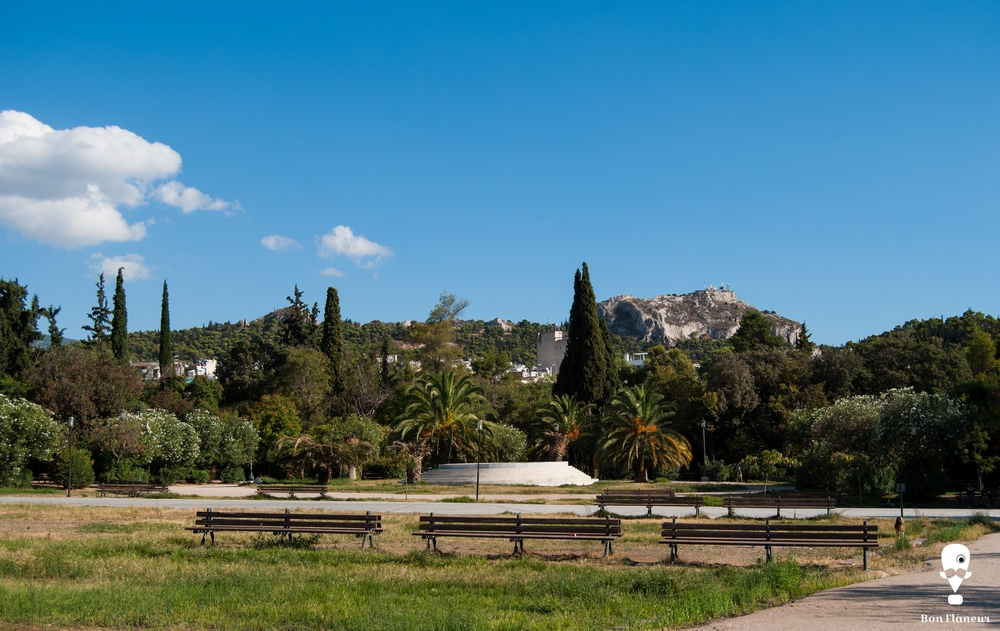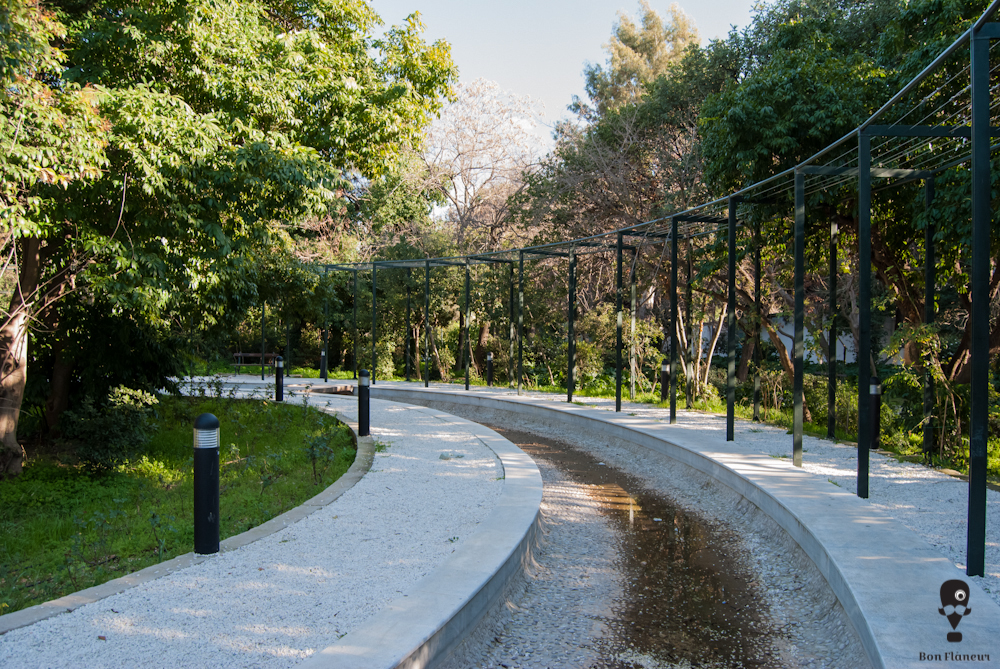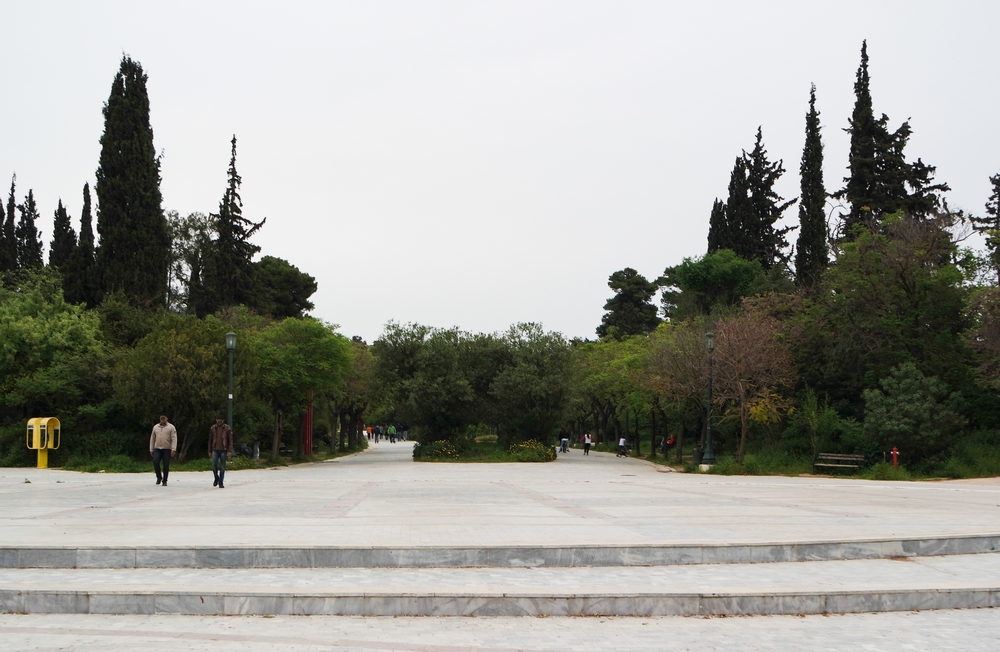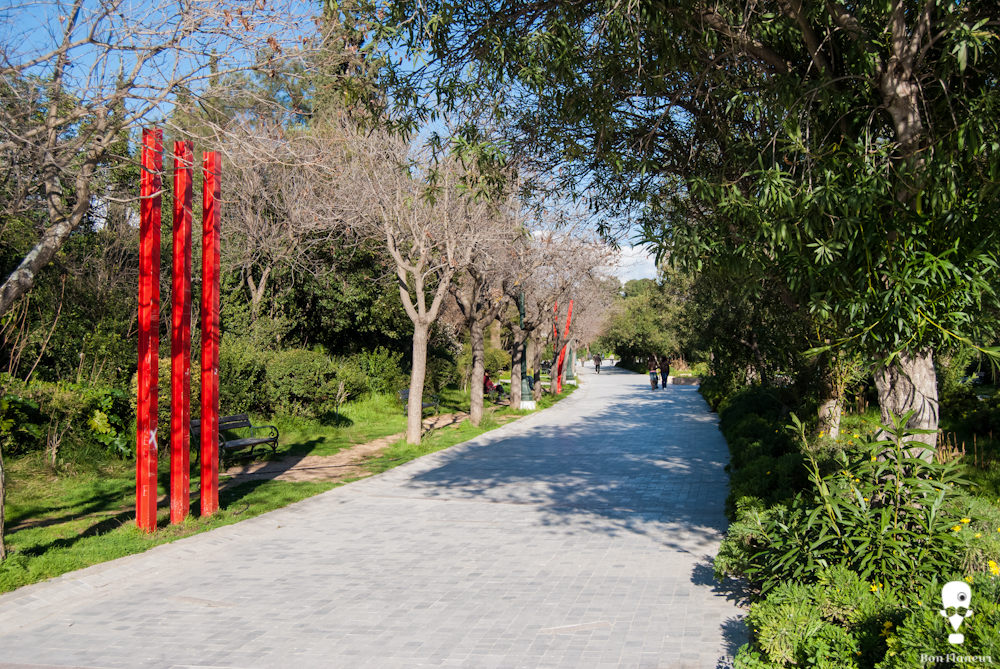Pedion tou Areos (Champ de Mars)
Pedion tou Areos is a park built in honour of the heroes of the Greek Revolution, whose busts can be seen along the park's main paths.
Location
Timeline
Modern and Contemporary era (1821 - )
From the first half of the 19th century it served as a military exercises field and only on Sundays and holidays stayed open for the recreation of the Athenians.
1863 Since then, and until today, it is used as place for political and trade union gatherings.
1916 During the period of the National Schism, at the site of the current sculpture of Athena, Eleftherios Venizelos was cursed by the pro-royalists (12/12/1916). Protesters threw stones as part of this “curse”, 100,000 of which were stacked at the site.
1920 It was selected as the official site to pay tribute to the heroes of the Greek War of Independence. It was in danger of being turned into plots for business exploitation and later by entities such as the Ministry of Agriculture, the National Theater and the Youth Men’s Christian Association (YMCA).
1925 A gallows is added for the punishment of the public money abusers. During the same period it hosted also refugee camps.
1934 It was decided by law to be regenerated and transferred into the hands of the municipality.
2008 Last renovation.














Share